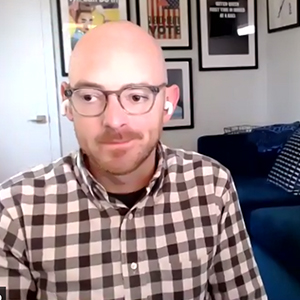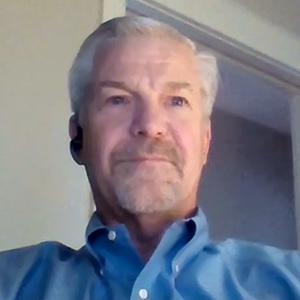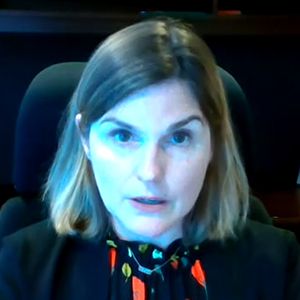New York’s wholesale electricity markets are awash with opportunities for energy storage but lack experience in integrating the technology.
That was a key takeaway from a panel Tuesday that included officials from FERC, NYISO and an energy storage developer.

From a public policy perspective, New York is doing everything all at once, Key Capture Energy CEO Jeff Bishop said at the 11th Annual Meeting of the New York Battery and Energy Storage Technology Consortium (NY-BEST).
New York’s Climate Leadership and Community Protection Act (CLCPA) requires the state to consume 70% renewable electricity by 2030 and switch to 100% zero-emission power by 2040. It also calls for the procurement of 6 GW of solar by 2025, 3 GW of storage by 2030, and 9 GW of offshore wind by 2035. The state is targeting shutdown of some of its most polluting fossil plants from an environmental justice perspective.
FERC three years ago issued Order 841, which directs grid operators to integrate energy storage into their wholesale markets, and NYISO outpaced most of its counterparts in anticipating last September’s Order 2222, which directs RTOs/ISOs to allow distributed energy resource aggregations to participate in their markets. (See NYISO Discusses FERC Order 2222 Compliance.)
Right Rules
“In order to fully realize what New York would like to achieve in the transportation and building sectors, we need to make sure that we have a reliable grid,” NYISO Executive Vice President Emilie Nelson said during the panel. “Many of the studies that have been done by NYISO and, quite frankly, by many others frame some of the challenges that we really need to meet successfully with respect to thinking about storage.”

“Really it’s just a fundamental question of are the rules in place right now in order to really spur development to be able to get the capacity needed for the next generation of ultimate electricity and power demands for the overall state,” Bishop said.
Key Capture Energy has operations both in New York and in Texas. “One of the key things that I look at in all of these markets as a reflection of Order 841 is that there is still an imbalance of information, where when we came in and put our first 20 MW project online in 2019, we had no idea what the frequency regulation market actually was in New York state,” Bishop said. “We were able to model it, and we sat down with very patient New York ISO staff just trying to figure out what is actually the frequency regulation market in New York because it was very opaque.”
Testing, Testing
Panel moderator Pete Fuller, of Autumn Lane Consulting, said he liked Bishop’s example of the frequency regulation market but said the lack of operational history and data on storage was a barrier to development.
“We can make our best guess of simulations … but the granularity, the real-time operations, the reactivity, the responsiveness of batteries — it’s a new ballgame and we don’t necessarily have all the tools,” Fuller said. “Are we at a point where we really just need some, for lack of a better term, guinea pigs — those early adopters and early movers to get on the system and build that history and that data?”

Nelson said the question is how to shift projects from being on paper to reality, which dovetailed with an audience question about how to help utilities and others charged with maintaining reliability of transmission and distribution grids to think about new techniques and opportunities made available by emerging technologies.
“I believe that really getting some experience with them will certainly help … and until we have some experience with these technologies it is a very educated guess on exactly what is going to need to come together,” Nelson said.
Bishop said that the ability for energy storage projects to get capacity payments would really provide “the data that we need to be able to build the following year a 200-MW size project closer to New York City… [and] ‘guinea pig’ is probably not quite the right word, especially for my investors, but you know clearly there has to be some data and right now there is clearly a lack.”
The state’s Public Service Commission has tried to push storage forward both from a wholesale market perspective and by getting utilities “comfortable” through a series of non-wires alternatives and utility procurement, he said.

FERC Commissioner Allison Clements said the commission has plenty of work to do on the issue of storage and hoped to get robust participation in a two-part technical conference in September on energy and ancillary services.
In its rulemaking, FERC must consider the interaction of the parties and the need to disrupt the status quo, she said. “So, when I look at 2222 implementation coming down the pike, I think some of the hardest part of it is that there is no regulation it falls between FERC’s regulation and the state’s regulation.”
New York has the benefit of having only two balancing authorities instead of multiple states around it, but Clements said she is focusing on standards and “other coordination and interoperability issues between states at distribution system operators and transmission system operators and finding opportunities to facilitate those interactions in a way that both bring down kind of the unknowns, the fear level, but also save costs relative to potential costs of implementation.”
Nelson said that NYISO has prioritized the idea of dual participation for storage in wholesale and retail markets. “We have always really highly valued operator situational awareness and visibility… [for] reliability needs on the grid, so we fairly quickly established rules to allow for dual participation. But part of that is having that awareness and that communication from a telemetry perspective that allows a good line of sight between the utilities and the NYISO.”



